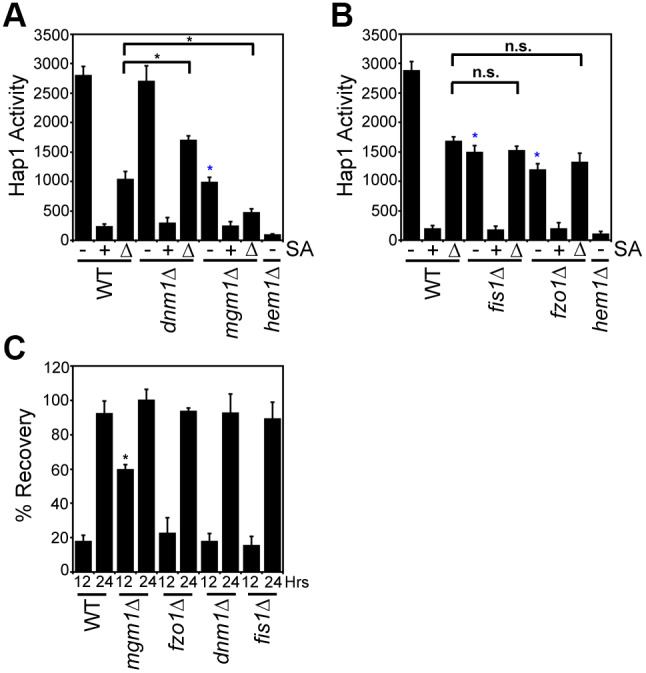Fig. 7.

Mitochondrial–nuclear heme trafficking regulates Hap1 activity and sensitivity to new heme synthesis. (A,B) Hap1 activity in the indicated strains as measured by a transcriptional reporter that uses eGFP driven by the CYC1 promoter, a Hap1 target gene. Hap1 activity in cells that were untreated with SA (−), treated with 500 μM SA (+), or treated with 500 μM SA followed by shifting to medium lacking SA for 4 h (Δ) is shown. Fluorimetry data represent the mean±s.d. of three biological replicates. *P<0.001, asterisks not associated with an indicated pair-wise comparison (blue) were compared to WT untreated samples; ns, not significant (one-way ANOVA with Bonferroni's post-hoc test). (C) Cellular tolerance to new heme synthesis. Cells were pre-cultured overnight with or without 500 μM SA then allowed to recover on medium without SA. Sensitivity to new heme synthesis was scored as ‘% Recovery’, as described by Eqn 3, by comparing growth at the indicated times to growth of cells continually maintained in medium without SA and with SA. Growth data represent the mean±s.d. of three biological replicates. *P<0.001 (one-way ANOVA with Dunnett's post-hoc test relative to WT cells).
